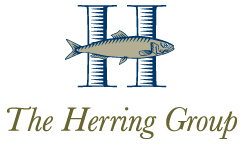This article originally appeared on LandscapeManagement.net on August 30, 2021. Greg Herring regularly writes for Landscape Management, providing financial analysis and insights tailored to landscape business owners.
Is BrightView’s landscape maintenance business growing?
How much is BrightView planning to increase pricing to offset wage inflation?
In this article, I will answer those two questions and review BrightView’s financial results for the quarter ended June 30, 2021.
Can you imagine explaining to the world how your business is doing every three months?
Can you imagine having to produce results that show year-over-year growth every three months despite changes in weather, including snowfall, changes in the H2B visa program, economic changes and even pandemics? Unfortunately, that is the situation for BrightView. It’s a tough road.
BrightView is a $2.5 billion revenue company. My goal is to help “the little guy” understand what is happening at “the big guy.” In the landscape industry, almost every company is a little guy compared with BrightView.
Is BrightView’s landscape maintenance business growing?
As seen in the second table below, BrightView shows revenue growth of 10.8 percent in the quarter ended June 30, 2021, as compared with the quarter ended June 30, 2020. Frankly, that statistic is meaningless because of the impact of acquisitions, COVID-19 and the routine variation in construction revenue. The following table excludes snow and construction revenue. To exclude the impact of COVID, the starting period is the quarter ended June 30, 2019. The table also shows the impact of two years of acquisitions. The calculated net revenue lost, $11.1 million, or 2.2 percent, represents a loss of contract revenue, ancillary revenue, or both. Historically, BrightView has said that aggregate landscape maintenance contract prices increase 1 percent to 2 percent per year, excluding the year of COVID-19. Any price inflation would increase the amount of “real” lost revenue.
| Totals | |
| Revenue for the Quarter Ended June 30, 2019 | $486.5 |
| Estimated revenue for the quarter from Acquisitions in the 12 months ended June 30, 2020 |
28.6 |
| Revenue for the quarter from Acquisitions in the 12 months ended June 30, 2021, net |
17.2 |
| “Lost” Revenue | (11.1) |
| Revenue for the Quarter Ended June 30, 2021 | 521.2 |
Significant growth can be difficult for a $2.5 billion services company. BrightView’s landscape maintenance business has annual revenue of $1.6 billion. To grow just 10 percent a year, without acquisitions, BrightView would have to add $160 million in revenue in addition to replacing revenue lost from customer departures.
How much is BrightView planning to increase pricing to offset wage inflation?
In his comments to Wall Street stock analysts, John Feenan, the BrightView CFO said, “Historically, I think we’ve been very clear that we’ve seen [wage] inflation around 4 percent to 5 percent. We’re seeing it closer to 5 percent this year. Historically, we’ve been able to offset that or mitigate that with price increases. That’s been more challenging through COVID. We definitely plan to reinitiate that toward the end of this year and into 2022. And we have been able to adjust some of that through scope.”
As I listened to other questions and answers related to pricing, inflation and gross margins, I would describe BrightView’s plans on maintenance price increases as timid.
Frankly, I see this timidity throughout the industry. The industry seems to fear losing revenue, even revenue that is not profitable.
If I am correct, BrightView’s timidity is understandable. As I have written previously, it must show revenue growth to maintain their stock price. It must maintain its stock price to provide an opportunity for its private equity shareholders to exit their investment. The private equity investors own 59 percent of the company.
In addition, BrightView’s management and employees are incentivized through stock-based compensation.
We will know more about BrightView’s price increases in early December.
Income statement summary
‘In its public reports, BrightView “adjusts” its earnings before interest, tax and depreciation and net income for certain expenses. I have used some of these adjustments for operating income in the tables below. The idea is that these expenses are not part of ordinary operations. Historically, the adjustments included expenses associated with business transformation and integration, becoming a public company and defending shareholder lawsuits and paying some employees partially through equity-based compensation.
The most recent four quarters also included an adjustment for $22.9 million in COVID-19 related expenses. In the table below, I did not adjust the results for COVID-19 expenses because they are a normal part of operations for landscape companies now. In addition, BrightView included an adjustment for the $22.2 million loss on sale of the BrightView Tree Co., which I included as an adjustment in the quarter ended September 30, 2020. Finally, in the quarter ended June 30, 2020, BrightView recorded an expense of $24.1 million to increase reserves related to its self-insurance program.
Typically, a reserve is based on estimates from current and prior quarters; however, there is not sufficient information to determine the precise timing of when it should have been expensed. Therefore, I have included it as an adjustment. If the additional expense were spread over the prior two years, the net operating profit margin for those periods would have been reduced by approximately 50 basis points (0.5 percent).
For the accounting experts: Note that I have excluded from operating income the expense related to the amortization of intangible assets that were recorded as BrightView acquired other businesses. Since most landscape companies do not have amortization of intangible assets, I have excluded it, so they can compare their numbers to BrightView’s numbers.
To see short-term trends, the following table shows operating results for each of the past five quarters:
| June-20 | Sept-20 | Dec-20 | Mar-21 | June-21 | |
| Net service revenues | $608.1 | $608.1 | $554.4 | $651.9 | $673.6 |
| Year-over-year growth rate | -7.5% | -2.7% | -2.9% | 16.6% | 10.8% |
| Cost of services | 451.7 | 444.5 | 420.8 | 493.8 | 494.6 |
| Gross profit | 156.4 | 163.6 | 133.6 | 158.1 | 179.0 |
| Gross profit margin | 25.7% | 26.9% | 24.1% | 24.3% | 26.6% |
| Selling, general and administrative expenses | 1319.8 | 138.4 | 123.3 | 127.9 | 123.1 |
| Adjustments | (39.8) | (35.2) | (11.6) | (11.5) | (12.8) |
| Ongoing selling, general and administrative expenses | 92.0 | 103.2 | 111.7 | 116.4 | 110.3 |
| Adjusted operating income | $64.4 | $60.4 | $21.9 | $41.7 | $68.7 |
| Operating profit margin | 10.6% | 9.9% | 4.0% | 6.4% | 10.2% |
To see long-term trends, the following table shows operating results for each of the past three years:
| Year Ended Jun-19 | Year Ended Jun-20 | Year Ended Jun-21 | |
| Net service revenues | $2,361.6 | $2,362.7 | $2,488.0 |
| Year-over-year growth rate | 1.0% | 0.0% | 5.3% |
| Cost of services | 1,729.4 | 1,759.3 | 1,853.7 |
| Gross profit | 632.2 | 603.4 | 634.3 |
| Gross profit margin | 26.8% | 25.5% | 25.5% |
| Selling, general and administrative expenses | 467.8 | 497.8 | 512.7 |
| Adjustments | (52.0) | (83.6) | (71.1) |
| Ongoing selling, general and administrative expenses | 415.8 | 414.2 | 441.6 |
| 17.6% | 17.5% | 17.7% | |
| Adjusted operating income | $216.4 | $189.2 | $192.7 |
| Operating profit margin | 9.2% | 8.0% | 7.7% |

